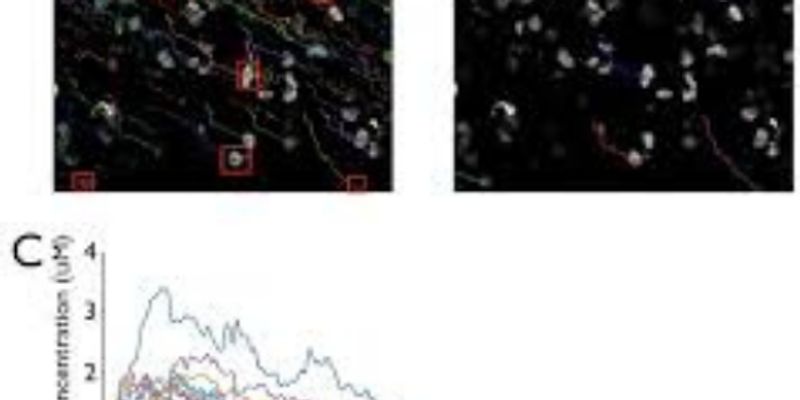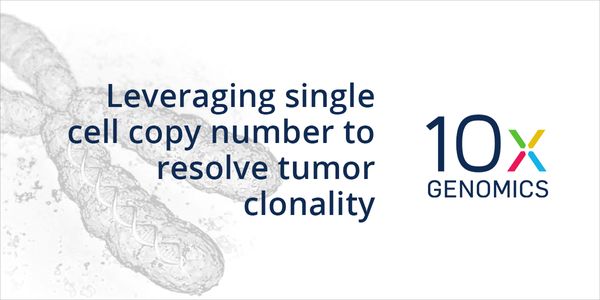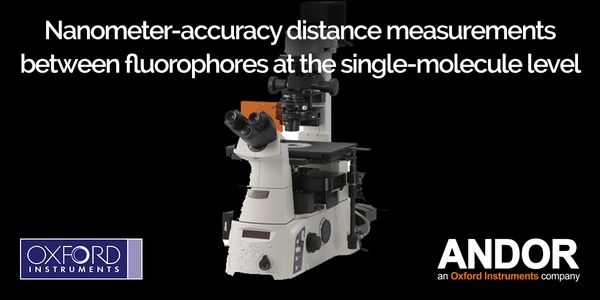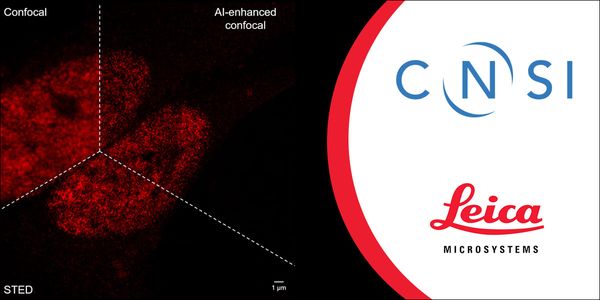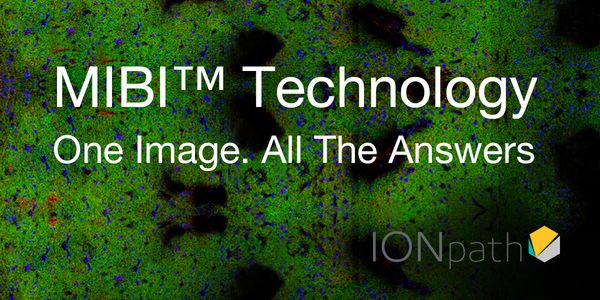Single-Cell Analysis
Single-cell analysis allows the study of cell-to-cell variation within a cell population (organ, tissue, and cell culture). Single-cell analysis is of critical importance in revealing population heterogeneity, identifying minority sub-populations of interest, as well as discovering unique characteristics of individual cells. Single-cell-analysis is important, as it allows for the study of cell-to-cell variations.
-
NOV 12, 2019 | 10:00 AMDATE: November 12, 2019TIME: 10:00am PSTDirect measurement of copy number by droplet-based shallow sequencing of genomic DNA has the potential to provide new insights into tumor heterog...NOV 07, 2019 | 10:00 AMDATE: November 7, 2019TIME: 10:00am PST, 1:00pm EST Studying the pathogenesis of diabetes requires detailed analysis of the pancreatic islet microenvironment and its numerous c...OCT 30, 2019 | 7:00 AMDATE: October 30, 2019TIME: 7:00am PDTJoin us for a webinar to learn how to apply single cell methods to study cancer. Dr. William Greenleaf, Associate Professor from Stanford Universit...OCT 10, 2019 | 9:00 AMCopy-number alterations and chromosomal translocations are widespread in cancer and frequently causing oncogenic mutations that drive tumorigenesis and therapy resistance. Despite their preva...Speaker: Cheng-Zhong Zhang, PhDSEP 26, 2019 | 1:30 PMRNA-Seq has been used for the past decade to gain significant insights into gene expression. Using bulk methods however only allow for an understanding of the average gene expression within a...SEP 10, 2019 | 8:00 AMDATE: September 10, 2019TIME: 8:00am PTNext generation sequencing of the immune repertoire allows detailed, sequence-specific insight into the immune system’s adaptive response...AUG 13, 2019 | 9:00 AMDATE: August 13, 2019TIME: 9:00am PT, 12:00pm ET, 5:00pm BST Molecular complexes are major constituents of cells, hence unraveling their mechanisms is key to fuller comprehension of c...JUL 24, 2019 | 8:00 AMDATE: July 24, 2019TIMEL 8:00am PT Mass cytometry (CyTOF®) is a powerful approach to characterize the immune composition of complex biological specimens and gain insights in...JUL 23, 2019 | 10:00 AMDATE: July 23, 2019TIME: 10:00am PDTThe tumor microenvironment is a complex network of different cell types and states that imparts distinct properties to the tumor and plays a signif...Speaker: Doug Hinerfeld, PhD , Chris Merritt, PhD , Anushka Dikshit, PhDSponsored By: Advanced Cell DiagnosticsJUN 20, 2019 | 1:30 PMThe practice of precision medicine utilizes advanced diagnostic tools to identify specific groups of patients on the basis of particular molecular characteristics, and guide their treatment w...Speaker: David Hout, PhD , Benjamin Chaffey, PhDJUN 20, 2019 | 10:30 AMThe development of automated DNA sequencers utilizing Sanger sequencing and capillary electrophoresis made it possible to develop the first draft sequences of the human genome. The cost of do...JUN 20, 2019 | 10:30 AMTumor mutational burden (TMB) is an emerging biomarker that correlates with response to immunotherapeutic agents, such as checkpoint inhibitors. Recent studies indicate that a high mutation l...Speaker: Beate Litzenburger, Ph.D. , Raed Samara, PhDJUN 20, 2019 | 9:00 AMThe NIH put Precision Medicine on the map as a revolutionary way to manage disease, delivering the right treatment, to the right patient, at the right time. But what does Precision Medicine r...JUN 20, 2019 | 6:00 AMVirtually all tumors are genetically heterogeneous, containing subclonal populations of cells that are defined by distinct mutations. Subclones can have unique phenotypes that influence disea...MAY 30, 2019 | 9:00 AMIn this seminar, Dr Elvira will talk about the use of droplet microfluidic technologies for drug discovery. Initially, she will discuss the fundamental concepts of droplet microfluidic techno...Speaker: Katherine Elvira, MSci, PhD, ARCSMAY 30, 2019 | 7:30 AMThe ultimate limits of diagnostics in biology are the “quantum” units that convey information, e.g. single nucleic acids, proteins, and cells. Microfluidics has emerged as a power...Speaker: Dino Di Carlo, Ph.D.MAY 08, 2019 | 1:30 PMRecent improvements in sequencing chemistry and instrument performance combine to create a new PacBio data type of highly accurate (HiFi), long insert reads. Increased read length and improve...Speaker: Jonas Korlach, PhDMAY 08, 2019 | 6:00 AMC.E. CREDITSGenetic drivers of cancer can be dysregulated through epigenetic modifications of DNA. Although the critical role of DNA 5-methylcytosine (5mC) in the regulation of transcription is recognize...APR 18, 2019 | 9:00 AMDATE: April 18, 2019 TIME: 9:00am PDT...Speaker: Aydogan Ozcan, PhD , Hongda Wang, MS, BS , Yair Rivenson, PhD , Laurent Bentolila, PhDSponsored By: Leica MicrosystemsMAR 26, 2019 | 2:00 PMDATE: March 26, 2019TIME: 2:00pm PDT, 5:00pm EDT Prostate cancer is the second most common form of cancer in males, affecting one in eight men by the time t...MAR 13, 2019 | 12:00 PMStimulation of human visual cortex is known to elicit visual perceptions that could potentially be used for restoring artificial vision to individuals who have lost their vision due to non-co...MAR 13, 2019 | 11:20 AMJoin us in this unique opportunity to discuss neuroethics and innovative neurotechnologies....Speaker: Khara Ramos, PhD , Nader Pouratian, MD, PhD , Ashley Feinsinger, PhD , Francis Shen, JD, PhD , Saskia Hendriks, MD, PhDPresented at: Neuroscience Virtual Event Series 2019
MAR 13, 2019 | 10:40 AMWhat motivates patients to participate in clinical trials? Discussions most often revolve around potential study participants’ perception of therapeutic benefit. Misconceptions about th...Speaker: Nader Pouratian, MD, PhD , Ashley Feinsinger, PhDPresented at: Neuroscience Virtual Event Series 2019
MAR 05, 2019 | 10:00 AMDATE: March 5, 2019TIME: 10:00am PSTSingle cell analysis, starting with the earliest low parameter fluorescent experiments, helped define the major cell subsets of human ce...
NOV 12, 2019 | 10:00 AM
DATE: November 12, 2019TIME: 10:00am PSTDirect measurement of copy number by droplet-based shallow sequencing of genomic DNA has the potential to provide new insights into tumor heterog...
NOV 07, 2019 | 10:00 AM
DATE: November 7, 2019TIME: 10:00am PST, 1:00pm EST Studying the pathogenesis of diabetes requires detailed analysis of the pancreatic islet microenvironment and its numerous c...
OCT 30, 2019 | 7:00 AM
DATE: October 30, 2019TIME: 7:00am PDTJoin us for a webinar to learn how to apply single cell methods to study cancer. Dr. William Greenleaf, Associate Professor from Stanford Universit...
OCT 10, 2019 | 9:00 AM
Copy-number alterations and chromosomal translocations are widespread in cancer and frequently causing oncogenic mutations that drive tumorigenesis and therapy resistance. Despite their preva...
Speaker:
Cheng-Zhong Zhang, PhD
SEP 26, 2019 | 1:30 PM
RNA-Seq has been used for the past decade to gain significant insights into gene expression. Using bulk methods however only allow for an understanding of the average gene expression within a...
SEP 10, 2019 | 8:00 AM
DATE: September 10, 2019TIME: 8:00am PTNext generation sequencing of the immune repertoire allows detailed, sequence-specific insight into the immune system’s adaptive response...
AUG 13, 2019 | 9:00 AM
DATE: August 13, 2019TIME: 9:00am PT, 12:00pm ET, 5:00pm BST Molecular complexes are major constituents of cells, hence unraveling their mechanisms is key to fuller comprehension of c...
JUL 24, 2019 | 8:00 AM
DATE: July 24, 2019TIMEL 8:00am PT Mass cytometry (CyTOF®) is a powerful approach to characterize the immune composition of complex biological specimens and gain insights in...
JUL 23, 2019 | 10:00 AM
DATE: July 23, 2019TIME: 10:00am PDTThe tumor microenvironment is a complex network of different cell types and states that imparts distinct properties to the tumor and plays a signif...
Speaker:
Doug Hinerfeld, PhD
, Chris Merritt, PhD
, Anushka Dikshit, PhD
Sponsored By: Advanced Cell Diagnostics
JUN 20, 2019 | 1:30 PM
The practice of precision medicine utilizes advanced diagnostic tools to identify specific groups of patients on the basis of particular molecular characteristics, and guide their treatment w...
Speaker:
David Hout, PhD
, Benjamin Chaffey, PhD
JUN 20, 2019 | 10:30 AM
The development of automated DNA sequencers utilizing Sanger sequencing and capillary electrophoresis made it possible to develop the first draft sequences of the human genome. The cost of do...
JUN 20, 2019 | 10:30 AM
Tumor mutational burden (TMB) is an emerging biomarker that correlates with response to immunotherapeutic agents, such as checkpoint inhibitors. Recent studies indicate that a high mutation l...
Speaker:
Beate Litzenburger, Ph.D.
, Raed Samara, PhD
JUN 20, 2019 | 9:00 AM
The NIH put Precision Medicine on the map as a revolutionary way to manage disease, delivering the right treatment, to the right patient, at the right time. But what does Precision Medicine r...
JUN 20, 2019 | 6:00 AM
Virtually all tumors are genetically heterogeneous, containing subclonal populations of cells that are defined by distinct mutations. Subclones can have unique phenotypes that influence disea...
MAY 30, 2019 | 9:00 AM
In this seminar, Dr Elvira will talk about the use of droplet microfluidic technologies for drug discovery. Initially, she will discuss the fundamental concepts of droplet microfluidic techno...
Speaker:
Katherine Elvira, MSci, PhD, ARCS
MAY 30, 2019 | 7:30 AM
The ultimate limits of diagnostics in biology are the “quantum” units that convey information, e.g. single nucleic acids, proteins, and cells. Microfluidics has emerged as a power...
Speaker:
Dino Di Carlo, Ph.D.
MAY 08, 2019 | 1:30 PM
Recent improvements in sequencing chemistry and instrument performance combine to create a new PacBio data type of highly accurate (HiFi), long insert reads. Increased read length and improve...
Speaker:
Jonas Korlach, PhD
MAY 08, 2019 | 6:00 AM
C.E. CREDITS
Genetic drivers of cancer can be dysregulated through epigenetic modifications of DNA. Although the critical role of DNA 5-methylcytosine (5mC) in the regulation of transcription is recognize...
APR 18, 2019 | 9:00 AM
DATE: April 18, 2019 TIME: 9:00am PDT...
Speaker:
Aydogan Ozcan, PhD
, Hongda Wang, MS, BS
, Yair Rivenson, PhD
, Laurent Bentolila, PhD
Sponsored By: Leica Microsystems
MAR 26, 2019 | 2:00 PM
DATE: March 26, 2019TIME: 2:00pm PDT, 5:00pm EDT Prostate cancer is the second most common form of cancer in males, affecting one in eight men by the time t...
MAR 13, 2019 | 12:00 PM
Stimulation of human visual cortex is known to elicit visual perceptions that could potentially be used for restoring artificial vision to individuals who have lost their vision due to non-co...
MAR 13, 2019 | 11:20 AM
Join us in this unique opportunity to discuss neuroethics and innovative neurotechnologies....
Speaker:
Khara Ramos, PhD
, Nader Pouratian, MD, PhD
, Ashley Feinsinger, PhD
, Francis Shen, JD, PhD
, Saskia Hendriks, MD, PhD
Presented at: Neuroscience Virtual Event Series 2019
MAR 13, 2019 | 10:40 AM
What motivates patients to participate in clinical trials? Discussions most often revolve around potential study participants’ perception of therapeutic benefit. Misconceptions about th...
Speaker:
Nader Pouratian, MD, PhD
, Ashley Feinsinger, PhD
Presented at: Neuroscience Virtual Event Series 2019
MAR 05, 2019 | 10:00 AM
DATE: March 5, 2019TIME: 10:00am PSTSingle cell analysis, starting with the earliest low parameter fluorescent experiments, helped define the major cell subsets of human ce...
